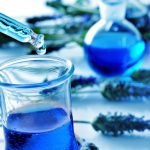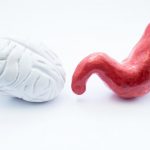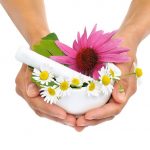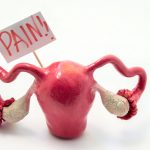Female Sexual Dysfunction: Not Just a Vadge Thing
Tolle Totum
Carrie Decker, ND
Through the years and many stages in a woman’s life, factors contributing to sexual dysfunction can vary vastly. In younger years, insecurities with one’s body and sexual ability may prevail1; in the middle years, stressors of career and/or children (or lack thereof) affect not only time for intimacy, but libido as well2,3; and in later years, changes in hormones and the vaginal tissues, and typical age-related increases in medical problems, render sexual function mediocre at best for many.4 Through each of these stages, historic traumas, relational stresses, cultural influences, and mental health are also major factors impacting sexual function.5,6 Given all of these possibilities (and many other factors not mentioned), it is no wonder that sexual problems are reported by more than 40% of women aged 18 years or older in the United States.7
While the general guidelines for male sexual dysfunction (MSD) provided by clinical resources such as UpToDate® are overly simplistic (improve libido and erection, reduce premature ejaculation)8,9 and primarily detail the various medications available for these purposes, there really are no standard guidelines for the management of female sexual dysfunction (FSD). For the management of FSD and female orgasmic disorder, a commonly recommended approach includes setting clear, feasible treatment goals, reminding the patient that sexual issues do not have an easy or immediate treatment, and ensuring the patient’s mood and psychosocial functioning are stable. Although these points are undeniably important, it is interesting to note that they do not have equal emphasis with regards to MSD. Following this, a complex breakdown of management per potential problem is often given (including discussion of weight loss surgery for body image issues, and recommendation against the use of any herbal supplement); this results in most physicians referring patients out to a sex therapist – a service that many insurance plans won’t cover. For the holistic provider or feminists reading this content, the contrast in approach and these other suggestions are difficult to digest without one’s blood pressure rising…
Clearly, there is a great need for improved holistic management of the factors contributing to FSD, one which we as holistic providers are well poised to offer. Hence, herein we will discuss some of the natural therapeutics – with evidence backing their use – for the treatment of FSD as well as its potential underlying etiology.
Ashwagandha: Stress Mediator and More
Ashwagandha (Withania somnifera) is a well-known botanical for improving many aspects of the body’s response to stress: in randomized, double-blind, placebo-controlled trials (RDBPCTs), ashwagandha has been shown to reduce perceived stress and stress assessment scores, decrease anxiety and symptoms of obsessive compulsive disorder, improve happiness, and curb food cravings, even reducing body weight.10-13 Biochemically, treatment with the herb has been shown in humans to reduce levels of cortisol, C-reactive protein (CRP), and fasting blood sugar, as well as improve cholesterol profiles.14,15 Additionally, in a RDBPCT, ashwagandha was shown to improve subclinical hypothyroidism,16 which, although not an established risk factor for FSD, has been shown to be associated with higher rates of sexual dysfunction and depression.17
In addition to impacting the stress response, there are several mechanisms via which this herb may directly impact female sexual function. In humans with type 2 diabetes, ashwagandha has been shown to improve endothelial function, including increasing levels of nitric oxide.18 Although healthy blood vessel dilation is often only thought of as a mediator of male sexual response, it plays a very important role in arousal, lubrication, and orgasm in females as well.19,20 In animals, ashwagandha has been shown to significantly increase testosterone and progesterone compared to controls, while in the animals with diabetes, it partially attenuated the adverse effects of diabetes on progesterone, as well as increasing it.21 In aging overweight men, supplementation of ashwagandha for 8 weeks significantly increased both dehydroepiandrosterone-sulfate (DHEA-S) and testosterone compared to placebo.22
The effects of ashwagandha on sexual function have also been studied clinically. Fifty women with sexual dysfunction and arousal disorder, ages 21 to 50, were randomized to treatment with 300 mg of ashwagandha or placebo twice daily for a period of 8 weeks.23 Physician interviews indicated that many of the women experienced stress associated with social demands, child rearing, and their husbands’ expectations despite living in affluent households with domestic help. After 8 weeks of ashwagandha supplementation, significant improvements in Female Sexual Function Index scores related to lubrication, arousal, orgasm, and satisfaction; an increase in number of successful sexual encounters; and a decrease in Female Sexual Distress Scale scores were seen, with most parameters having a p-value of less than 0.001 compared to placebo. No adverse effects were experienced, and the therapy was well tolerated. Ashwagandha has also been shown to be of therapeutic value for male sexual health, significantly improving hormone levels and sperm count as well as other semen parameters in men with oligospermia.24
Saffron: Antidote to Depression & SSRI-related Sexual Dysfunction?
In addition to the impact of stress on sexual function and overall well-being, mental health conditions can have a dramatic impact on sexual function.25 Rather than improving with pharmaceutical treatment, sexual function is often worsened by many anti-anxiety and antidepressant medications.26 With an estimated 21.4% of US adults experiencing a mood disorder at some point in their lives,27 and the risk of diagnosis with depression in menopause being 2.5 times that of depression during the premenopausal years,28 a considerable number of women will experience these challenges. A population survey of antidepressant use in the United States, from 2011 to 2014, found that more than 20% of women age 40 and older had taken an antidepressant within the last month – almost twice the rate of male use at a corresponding age.29 Clearly, mental health challenges and even their treatment will often be a factor in FSD.
Saffron (Crocus sativus), a valuable herb commonly used in the Mediterranean and surrounding regions for more than 3000 years as a flavoring, coloring, and even perfume,30 also has substantial evidence backing its medicinal use. Its brilliant yellow hue and characteristic taste are due to the high concentration of carotenoids and their degradation products found within it. The primary bioactive compounds found in saffron are crocin, crocetin, safranal, and picrocrocin, although trace amounts of lycopene, alpha- and beta-carotene, and zeaxanthin also may exist.31,32 In addition to this botanical’s antioxidant,33 anti-inflammatory,34 digestive,35 cardioprotective,36 and anticarcinogenic37 properties, it also been shown to improve depression as well as antidepressant-related sexual dysfunction.
In numerous RDBPCTs, treatment with saffron has been shown to significantly improve symptoms of anxiety and depression.38-40 Studies suggest that the active constituents found in saffron interact with the GABAergic system and modulate levels of serotonin, dopamine, and norepinephrine.41-43 A 2013 meta-analysis of the randomized controlled trials assessing the use of saffron for treatment of depression found a large effect size with supplementation of saffron compared to placebo, whereas when compared to various pharmaceutical antidepressants the effect size was null, indicating the treatments were similarly effective.44 Daily supplementation of a saffron extract has also been observed to significantly improve mood and overall symptoms in women with premenstrual syndrome.45
RDBPCTs have also assessed the impact of saffron on sexual function in women and men with antidepressant-related dysfunction. In women ages 18 to 45 who experienced sexual dysfunction after beginning treatment with fluoxetine for major depression, supplementation with 15 mg of an extract of saffron twice daily for 4 weeks significantly improved total sexual function index scores compared to placebo.46 To be eligible for this study, the women were required to have normal sexual function prior to beginning treatment with fluoxetine, and to be stable on 40 mg of fluoxetine daily for 6 weeks or more with at least 50% improvement in their depression symptoms. Significant improvements were observed in scores related to arousal, lubrication, and pain compared to placebo, although desire, satisfaction, and orgasm were not significantly improved. A similar study looked at the impact of the same therapeutic regime on MSD related to antidepressant treatment, also finding improvements in total scores compared to placebo, with the primary benefits attributed to improved erectile function.47
Saffron and its extracts have been shown to improve sexual function outside of this setting as well. In women ages 18 to 39 with complaints of sexual dysfunction not related to antidepressant use, supplementation with 15 mg of a saffron extract twice daily led to a significant increase in excitement and desire by 4 weeks, with all aspects of sexual dysfunction except lubrication and dyspareunia significantly improved vs placebo by 8 weeks.48 The constituent crocin was shown in animals to mediate saffron’s aphrodisiac effects.49 Other animal studies have shown the whole herb or its extract to improve endothelial function and activate nitric oxide synthase,50,51 which may be another means by which it improves sexual response. These and other mechanisms of action may translate to enhanced erectile function, which daily supplementation of saffron has been demonstrated to improve in men.52 Improvements in semen parameters have also been observed with regular saffron supplementation, making it worthy of consideration for infertility issues as well.53
Given the potential adverse effects of antidepressant medications on sexual health, and the observed benefits with saffron supplementation on both mood and sexual function, this botanical is at the top of the list for consideration when addressing mood as well as sexual health.
The Health of the Vadge Still Counts
Any woman that has experienced the discomfort of vaginal dryness or altered vaginal flora is well aware of how these changes can impact her sexual experience. From the embarrassment of having a discharge or altered odor to the considerable pain that can comes with penetration or even the application of a lubricant, vaginal health clearly plays a role in sexual wellness. Increasingly with age, dyspareunia occurs due to changes in the vaginal tissues and microbiome.54 Although the shifts in the vaginal microbiome are mediated by hormonal changes,55 the atrophy the tissue experiences also is associated with a low relative abundance of Lactobacillus.56
Comparisons between postmenopausal women taking hormone replacement therapy (HRT) and those not taking HRT have shown that in women on HRT (in this case conjugated equine estrogens), the dominant flora is lactobacilli.57 Not surprisingly, lower levels of potentially pathogenic bacteria were found in the women on HRT, which also translated to a significantly lower incidence of bacterial vaginosis (5.6% versus 31%). In premenopausal women, as well as postmenopausal women on HRT, the bacterial community is frequently dominated by Lactobacillus crispatus or L iners.56,58 L crispatus, considered a biomarker of a healthy vaginal tract,59 helps protect against genitourinary tract infections beyond just bacterial vaginosis involving Escherichia coli, Chlamydia trachomatis, and Neisseria gonorrhoeae.60-62 Lower levels of Lactobacillus spp, along with a notable absence of L crispatus, also have been shown in women who experience vulvodynia.63,64
In line with these findings, low doses of oral estrogen have been shown to improve symptoms of atrophic vaginitis in postmenopausal women, as well as dramatically increase the abundance of vaginal Lactobacillus spp and reduce levels of Gardnerella vaginalis and Atopobium vaginae, both of which were associated with genital symptoms.65 As HRT is contraindicated in many women with hormone-sensitive cancers, a non-hormonal therapy (such as probiotics) that efficaciously resolves vaginal atrophy and related infections in the menopausal period would be ideal. Encouragingly, oral administration of a combination of Lactobacillus spp including L cristpatus to a population of postmenopausal women undergoing chemotherapy for breast cancer was shown to positively influence the vaginal microbiota and improve Nugent scores compared to placebo.66 Additionally, vaginal administration of ultra-low doses of estriol (0.03 mg) in combination with L acidophilus daily has been shown to normalize the vaginal ecosystem and improve symptoms of vaginal atrophy,67 while only slightly increasing serum levels of estriol and having no effect on estrone and estradiol levels.68
Conclusion
The impact that each of these natural interventions may have on female sexual health as well as the many factors that contribute to its decline is well supported by clinical research. Given the low risk of adverse effects with each of these therapies, they are worthy of consideration when addressing sexual dysfunction in the many women that experience this challenge.
References:
- Claudat K, Warren CS, Durette RT. The relationships between body surveillance, body shame, and contextual body concern during sexual activities in ethnically diverse female college students. Body Image. 2012 ;9(4):448-454.
- Serati M, Salvatore S, Siesto G, et al. Female sexual function during pregnancy and after childbirth. J Sex Med. 2010;7(8):2782-2790.
- Piva I, Lo Monte G, Graziano A, Marci R. A literature review on the relationship between infertility and sexual dysfunction: does fun end with baby making? Eur J Contracept Reprod Health Care. 2014;19(4):231-237.
- Heidari M, Ghodusi M, Rezaei P, et al. Sexual Function and Factors Affecting Menopause: A Systematic Review. J Menopausal Med. 2019;25(1):15-27.
- Leiblum SR, Koochaki PE, Rodenberg CA, et al. Hypoactive sexual desire disorder in postmenopausal women: US results from the Women’s International Study of Health and Sexuality (WISHeS). Menopause. 2006;13(1):46-56.
- Lutfey KE, Link CL, Litman HJ, et al. An examination of the association of abuse (physical, sexual, or emotional) and female sexual dysfunction: results from the Boston Area Community Health Survey. Fertil Steril. 2008;90(4):957-964.
- Shifren JL, Monz BU, Russo PA, et al. Sexual problems and distress in United States women: prevalence and correlates. Obstet Gynecol. 2008;112(5):970-978.
- Qaseem A, Snow V, Denberg TD, et al. Hormonal testing and pharmacologic treatment of erectile dysfunction: a clinical practice guideline from the American College of Physicians. Ann Intern Med. 2009;151(9):639-649.
- Hatzimouratidis K, Amar E, Eardley I, et al. Guidelines on male sexual dysfunction: erectile dysfunction and premature ejaculation. Eur Urol. 2010;57(5):804-814.
- Chandrasekhar K, Kapoor J, Anishetty S. A prospective, randomized double-blind, placebo-controlled study of safety and efficacy of a high-concentration full-spectrum extract of ashwagandha root in reducing stress and anxiety in adults. Indian J Psychol Med. 2012;34(3):255-262.
- Pratte MA, Nanavati KB, Young V, Morley CP. An alternative treatment for anxiety: a systematic review of human trial results reported for the Ayurvedic herb ashwagandha (Withania somnifera). J Altern Complement Med. 2014;20(12):901-908.
- Jahanbakhsh SP, Manteghi AA, Emami SA, et al. Evaluation of the efficacy of Withania somnifera (Ashwagandha) root extract in patients with obsessive-compulsive disorder: A randomized double-blind placebo-controlled trial. Complement Ther Med. 2016;27:25-29.
- Choudhary D, Bhattacharyya S, Joshi K. Body Weight Management in Adults Under Chronic Stress Through Treatment With Ashwagandha Root Extract: A Double-Blind, Randomized, Placebo-Controlled Trial. J Evid Based Complementary Altern Med. 2017;22(1):96-106.
- Pingali U, Pilli R, Fatima N. Effect of Withania somnifera extract on mental stress induced changes in hemodynamic properties and arterial wave reflections in healthy subjects. Curr Top Nutraceutical Res. 2013;11(4):151-158.
- Auddy B, Hazra J, Mitra A, et al. A standardized Withania somnifera extract significantly reduces stress-related parameters in chronically stressed humans: a double-blind, randomized, placebo-controlled study. J Am Nutraceut Assoc. 2008;11:50-56.
- Sharma AK, Basu I, Singh S. Efficacy and Safety of Ashwagandha Root Extract in Subclinical Hypothyroid Patients: A Double-Blind, Randomized Placebo-Controlled Trial. J Altern Complement Med. 2018;24(3):243-248.
- Atis G, Dalkilinc A, Altuntas Y, et al. Sexual dysfunction in women with clinical hypothyroidism and subclinical hypothyroidism. J Sex Med. 2010;7(7):2583-2590.
- Usharani P, Kishan PV, Fatima N, Kumar CU. A comparative study to evaluate the effect of highly standardised aqueous extracts of Phyllanthus emblica, Withania somnifera and their combination on endothelial dysfunction and biomarkers in patients with type II diabetes mellitus. Int J Pharm Sci Res. 2014;5(7):2687-2697.
- Goldstein I, Berman JR. Vasculogenic female sexual dysfunction: vaginal engorgement and clitoral erectile insufficiency syndromes. Int J Impot Res. 1998;10 Suppl 2:S84-S90.
- Musicki B, Liu T, Lagoda GA, et al. Endothelial nitric oxide synthase regulation in female genital tract structures. J Sex Med. 2009;6 Suppl 3:247-253.
- Belal NM, El-Metwally EM, Salem IS. Effect of dietary intake ashwagandha roots powder on the levels of sex hormones in the diabetic and non-diabetic male rats. World J Dairy Food Sci. 2012;7(2):160-166.
- Lopresti AL, Drummond PD, Smith SJ. A Randomized, Double-Blind, Placebo-Controlled, Crossover Study Examining the Hormonal and Vitality Effects of Ashwagandha (Withania somnifera) in Aging, Overweight Males. Am J Mens Health. 2019;13(2):1557988319835985.
- Dongre S, Langade D, Bhattacharyya S. Efficacy and Safety of Ashwagandha (Withania somnifera) Root Extract in Improving Sexual Function in Women: A Pilot Study. Biomed Res Int. 2015;2015:284154.
- Ambiye VR, Langade D, Dongre S, et al. Clinical Evaluation of the Spermatogenic Activity of the Root Extract of Ashwagandha (Withania somnifera) in Oligospermic Males: A Pilot Study. Evid Based Complement Alternat Med. 2013;2013:571420.
- Kennedy SH, Rizvi S. Sexual dysfunction, depression, and the impact of antidepressants. J Clin Psychopharmacol. 2009;29(2):157-164.
- Baldwin DS, Manson C, Nowak M. Impact of Antidepressant Drugs on Sexual Function and Satisfaction. CNS Drugs. 2015;29(11):905-913.
- National Institute of Mental Health. Any Mood Disorder. Last updated November 2017. Available at: https://www.nimh.nih.gov/health/statistics/any-mood-disorder.shtml. Accessed June 20, 2019.
- Freeman EW, Sammel MD, Lin H, Nelson DB. Associations of hormones and menopausal status with depressed mood in women with no history of depression. Arch Gen Psychiatry. 2006;63(4):375-382.
- Pratt LA, Brody DJ, Gu Q. Antidepressant Use Among Persons Aged 12 and Over: United States, 2011-2014. NCHS Data Brief. 2017;(283):1-8.
- Deo B. Growing saffron—the world’s most expensive spice. Crop Food Res. 2003;20(1):1-4.
- Sampathu SR, Shivashankar S, Lewis YS, Wood AB. Saffron (Crocus sativus)—Cultivation, processing, chemistry and standardization. Crit Rev Food Sci Nutr. 1984;20(2):123-157.
- Melnyk JP, Wang S, Marcone MF. Chemical and biological properties of the world’s most expensive spice: Saffron. Food Res Int. 2010;43(8):1981-1989.
- Rahaiee S, Moini S, Hashemi M, et al. Evaluation of antioxidant activities of bioactive compounds and various extracts obtained from saffron (Crocus sativus L.): a review. J Food Sci Technol. 2015;52(4):1881-1888.
- Poma A, Fontecchio G, Carlucci G, Chichiriccò G. Anti-inflammatory properties of drugs from saffron crocus. Antiinflamm Antiallergy Agents Med Chem. 2012;11(1):37-51.
- Khorasany AR, Hosseinzadeh H. Therapeutic effects of saffron (Crocus sativus L.) in digestive disorders: a review. Iran J Basic Med Sci. 2016;19(5):455-469.
- Hatziagapiou K, Lambrou GI. The Protective Role of Crocus Sativus L. (Saffron) Against Ischemia- Reperfusion Injury, Hyperlipidemia and Atherosclerosis: Nature Opposing Cardiovascular Diseases. Curr Cardiol Rev. 2018;14(4):272-289.
- Abdullaev FI, Espinosa-Aguirre JJ. Biomedical properties of saffron and its potential use in cancer therapy and chemoprevention trials. Cancer Detect Prev. 2004;28(6):426-432.
- Moshiri E, Basti AA, Noorbala AA, et al. Crocus sativus L. (petal) in the treatment of mild-to-moderate depression: a double-blind, randomized and placebo-controlled trial. Phytomedicine. 2006;13(9-10):607-611.
- Lopresti AL, Drummond PD, Inarejos-García AM, Prodanov M. affron®, a standardised extract from saffron (Crocus sativus L.) for the treatment of youth anxiety and depressive symptoms: A randomised, double-blind, placebo-controlled study. J Affect Disord. 2018;232:349-357.
- Mazidi M, Shemshian M, Mousavi SH, et al. A double-blind, randomized and placebo-controlled trial of Saffron (Crocus sativus L.) in the treatment of anxiety and depression. J Complement Integr Med. 2016;13(2):195-199.
- Marañón JA, Lozano C, de los Santos L, et al. Selective Method of Detection and Quantification of Safranal–The Natural Benzodiazepine-Like Gaba-A Receptor Agonist. Planta Medica. 2013;79(10):PO15.
- Hosseinzadeh H, Karimi G, Niapoor M. Antidepressant effects of Crocus sativus stigma extracts and its constituents, crocin and safranal, in mice. J Med Plants. 2004;3:48-58.
- Ettehadi H, Mojabi SN, Ranjbaran M, et al. Aqueous extract of saffron (Crocus sativus) increases brain dopamine and glutamate concentrations in rats. J Behav Brain Sci. 2013;3(3):315-319.
- Hausenblas HA, Saha D, Dubyak PJ, Anton SD. Saffron (Crocus sativus L.) and major depressive disorder: a meta-analysis of randomized clinical trials. J Integr Med. 2013;11(6):377-383.
- Agha‐Hosseini M, Kashani L, Aleyaseen A, et al. Crocus sativus L. (saffron) in the treatment of premenstrual syndrome: a double-blind, randomised and placebo-controlled trial. BJOG. 2008;115(4):515-519.
- Kashani L, Raisi F, Saroukhani S, et al. Saffron for treatment of fluoxetine-induced sexual dysfunction in women: randomized double-blind placebo-controlled study. Hum Psychopharmacol. 2013;28(1):54-60.
- Modabbernia A, Sohrabi H, Nasehi AA, et al. Effect of saffron on fluoxetine-induced sexual impairment in men: randomized double-blind placebo-controlled trial. Psychopharmacology (Berl). 2012;223(4):381-388.
- Rahmati M, Rahimikian F, Mirmohammadali M, et al. The effect of saffron on sexual dysfunction in women of reproductive age. Nursing Practice Today. 2017;4(3):154-163.
- Hosseinzadeh H, Ziaee T, Sadeghi A. The effect of saffron, Crocus sativus stigma, extract and its constituents, safranal and crocin on sexual behaviors in normal male rats. Phytomedicine. 2008;15(6-7):491-495.
- Razavi BM, Alyasin A, Hosseinzadeh H, Imenshahidi M. Saffron Induced Relaxation in Isolated Rat Aorta via Endothelium Dependent and Independent Mechanisms. Iran J Pharm Res. 2018;17(3):1018-1025.
- Khori V, Alizadeh AM, Yazdi H, et al. Frequency-dependent electrophysiological remodeling of the AV node by hydroalcohol extract of Crocus sativus L. (saffron) during experimental atrial fibrillation: the role of endogenous nitric oxide. Phytother Res. 2012;26(6):826-832.
- Shamsa A, Hosseinzadeh H, Molaei M, et al. Evaluation of Crocus sativus L. (saffron) on male erectile dysfunction: a pilot study. Phytomedicine. 2009;16(8):690-693.
- Maleki-Saghooni N, Mirzaeii K, Hosseinzadeh H, et al. A systematic review and meta-analysis of clinical trials on saffron (Crocus sativus) effectiveness and safety on erectile dysfunction and semen parameters. Avicenna J Phytomed. 2018;8(3):198-209.
- Dennerstein L, Alexander JL, Kotz K. The menopause and sexual functioning: a review of the population-based studies. Annu Rev Sex Res. 2003;14:64-82.
- Farage MA, Miller KW, Sobel JD. Dynamics of the vaginal ecosystem—hormonal influences. Infect Dis Res Treat. 2010;3:IDRT-S3903.
- Brotman RM, Shardell MD, Gajer P, et al. Association between the vaginal microbiota, menopause status, and signs of vulvovaginal atrophy. Menopause. 2018;25(11):1321-1330.
- Heinemann C, Reid G. Vaginal microbial diversity among postmenopausal women with and without hormone replacement therapy. Can J Microbiol. 2005;51(9):777-781.
- Gliniewicz K, Schneider GM, Ridenhour BJ, et al. Comparison of the Vaginal Microbiomes of Premenopausal and Postmenopausal Women. Front Microbiol. 2019;10:193.
- Lepargneur JP. Lactobacillus crispatus as biomarker of the healthy vaginal tract. Ann Biol Clin (Paris). 2016;74(4):421-427.
- Ghartey JP, Smith BC, Chen Z, et al. Lactobacillus crispatus dominant vaginal microbiome is associated with inhibitory activity of female genital tract secretions against Escherichia coli. PLoS One. 2014;9(5):e96659.
- Nardini P, Ñahui Palomino RA, Parolin C, et al. Lactobacillus crispatus inhibits the infectivity of Chlamydia trachomatis elementary bodies, in vitro study. Sci Rep. 2016;6:29024.
- Breshears LM, Edwards VL, Ravel J, et al. Lactobacillus crispatus inhibits growth of Gardnerella vaginalis and Neisseria gonorrhoeae on a porcine vaginal mucosa model. BMC Microbiol. 2015;15:276.
- Vadala M, Testa C, Coda L, et al. Vulvovestibular Syndrome and Vaginal Microbiome: A Simple Evaluation. J Clin Med Res. 2018;10(9):688-692.
- Ventolini G, Gygax SE, Adelson ME, Cool DR. Vulvodynia and fungal association: a preliminary report. Med Hypotheses. 2013;81(2):228-230.
- Shen J, Song N, Williams CJ, et al. Effects of low dose estrogen therapy on the vaginal microbiomes of women with atrophic vaginitis. Sci Rep. 2016;6:24380.
- Marschalek J, Farr A, Marschalek ML, et al. Influence of Orally Administered Probiotic Lactobacillus Strains on Vaginal Microbiota in Women with Breast Cancer during Chemotherapy: A Randomized Placebo-Controlled Double-Blinded Pilot Study. Breast Care (Basel). 2017;12(5):335-339.
- Jaisamrarn U, Triratanachat S, Chaikittisilpa S, et al. Ultra-low-dose estriol and lactobacilli in the local treatment of postmenopausal vaginal atrophy. Climacteric. 2013;16(3):347-355.
- Donders G, Neven P, Moegele M, et al. Ultra-low-dose estriol and Lactobacillus acidophilus vaginal tablets (Gynoflor(®)) for vaginal atrophy in postmenopausal breast cancer patients on aromatase inhibitors: pharmacokinetic, safety, and efficacy phase I clinical study. Breast Cancer Res Treat. 2014;145(2):371-379.
 Carrie Decker, ND, graduated with honors from the National College of Natural Medicine (now the National University of Natural Medicine) in Portland, OR. Prior to becoming a naturopathic physician, Dr Decker was an engineer and obtained graduate degrees in biomedical and mechanical engineering from the University of Wisconsin-Madison and University of Illinois at Urbana-Champaign, respectively. She continues to enjoy academic research and writing and uses these skills to support integrative medicine education as a writer and contributor to various resources. Dr Decker supports Allergy Research Group as a member of their education and product development team.
Carrie Decker, ND, graduated with honors from the National College of Natural Medicine (now the National University of Natural Medicine) in Portland, OR. Prior to becoming a naturopathic physician, Dr Decker was an engineer and obtained graduate degrees in biomedical and mechanical engineering from the University of Wisconsin-Madison and University of Illinois at Urbana-Champaign, respectively. She continues to enjoy academic research and writing and uses these skills to support integrative medicine education as a writer and contributor to various resources. Dr Decker supports Allergy Research Group as a member of their education and product development team.









